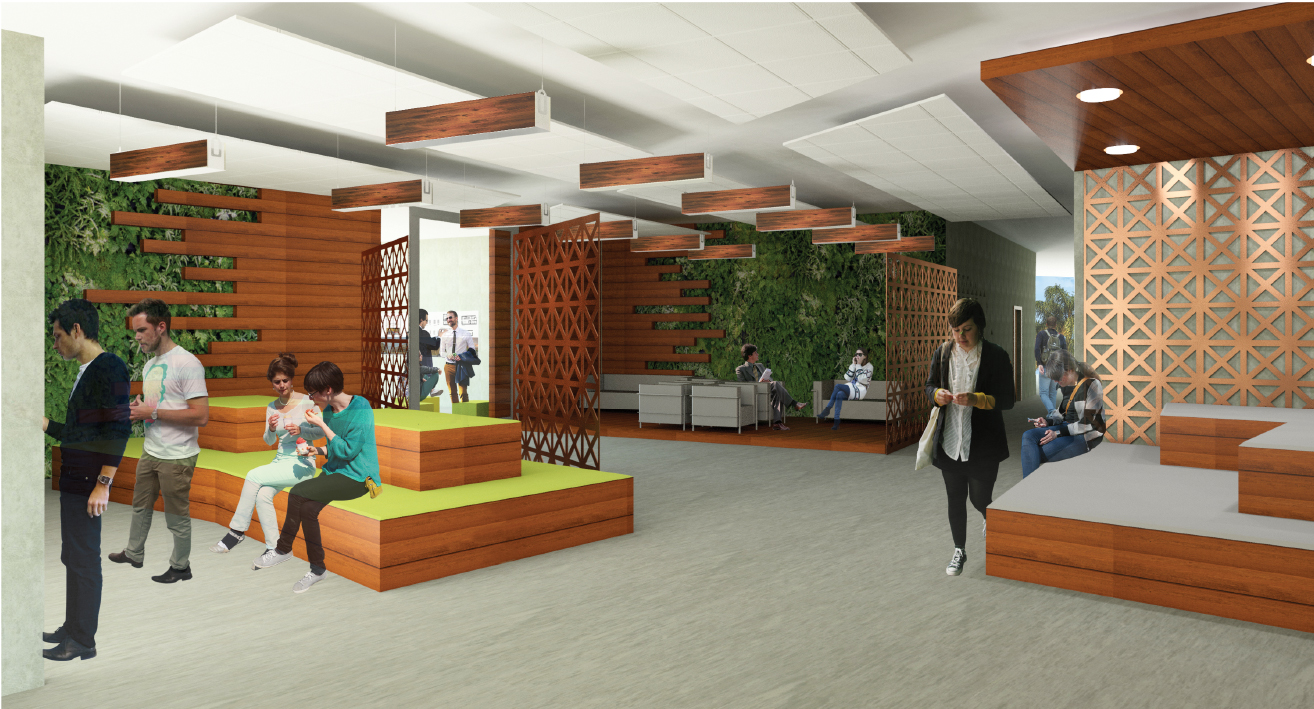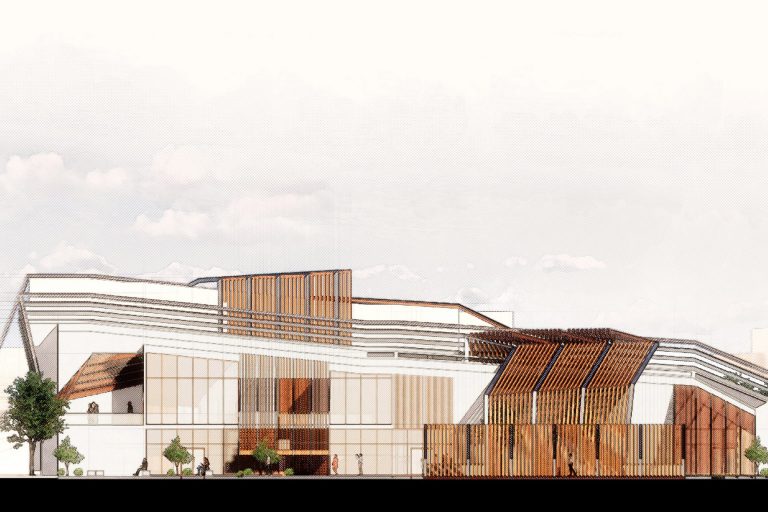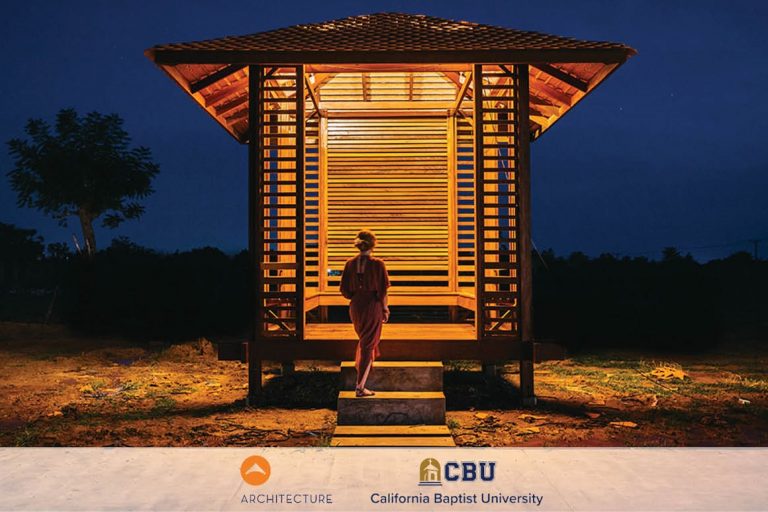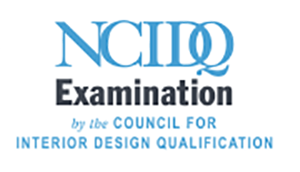
Interior Design
Interior Design
Impacting Lives Through Design
The Interior Design major at CBU creates a rich design environment marked by the confluence of advanced practice, contemporary theory, and social engagement. Our primary goal is to help students develop the capacity and judgment necessary to understand the built environment and generate interior design as a critical response, so that each student can engage both the discipline of interior / environmental design on multiple levels – artistic, technological, social, political, environmental, economic, spiritual – necessary to be a successful practitioner and a conscientious citizen with a Biblical worldview.
Interior Design Degrees
CBU Interior Design offers a Bachelors of Arts degree preparing students to be successful professionals and experts into the world of environmental / interior design – while simultaneously living Biblically based missional lives.
Optional Elective Focus
CBU Interior Design is built on a for a flexible curriculum, allowing students to utilize electives to support their interests. Situated within a large art and design college, interior design majors have the chance to draw from other fields to enhance their education.
“CBU Interior Design is an exciting program. Not only is this program situated in an college with a top architecture program, but it regularly interacts with graphic design majors, photography majors,, production design majors, it is taught from a Christian worldview! What more could you ask for?” — Incoming Interior Design Student.
News
Ready to See Differently?
B.A. Interior Design
The Interior Design major develops students in the art of applying artistic principles and techniques to the professional planning, designing, equipping, and furnishing of interior spaces – preparing them to pursue professional practice as interior designers.
General Education Courses
The general education requirements will follow the curriculum set forth for other university programs. Some general education requirements will be met through specific architecture major requirements.
Lower Division Requirements
ARC 120 Design Communications
Units: 3. Offered: Fall.
The course will establish a base of design concepts and knowledge with an introduction to references and ideas to foster independent inquiry. The course will develop foundational appreciation and skills for effective two dimensional visual expression through graphic representation.
ARC 122 Design Communications
Units: 6. Offered: Spring.
The course will establish a base of design concepts and knowledge with an introduction to references and ideas to foster independent inquiry. The course will develop foundational appreciation and skills for effective three-dimensional (3D) visual expression through graphic representation. Prerequisite: ARC 120. Pre- or Co- Requisite: DES 110.
ARC 220 Computer Modeling
Units: 3. Offered: Spring.
The course will be an advanced course to develop an awareness and understanding of the role of Building Information Modeling in the student’s ability to study design ideas and present those ideas in the various design disciplines. Emphasis will be on the relationship of computer graphics with the design process. Prerequisite: ARC 120.
ARC 242 Architectural History II
Units: 3. Offered: Spring.
The course will cover formal, theoretical, material, pragmatic and conceptual aspects of architecture, cities and art, examined in relation to their cultural contexts, from circa 1400 to the present. Prerequisite: ARC 240.
DES 110 Creativity: Process and Purpose
Units: 3. Offered: Fall, Spring.
This course provides an introduction to creativity through discussion and project-based learning. The course provides overview and practice of creative processes (e.g. ideation, research, empathy, proto-typing, etc), in-depth discussion of the theological foundations for creativity, and practice for developing creative habits.
IND 250 Space Planning and Code
Units: 3. Offered: Fall.
This course focuses on space planning with an emphasis on programming and behavior aspects of space. Additionally, the course introduces and applies federal and state code and specifications concerning life-safety issues, barrier free access and universal design requirements relative to interior design. Skill and knowledge are applied to the design of spaces. Prerequisite: ARC 120
IND 280 Materials, Finishes, and Sourcing
Units: 3. Offered: Fall (Even Years).
This course explores the process of material research and its use in the design of interior space. Pre-Requisite: ARC 122
Upper Division Requirements
ARC 385 Luminous and Sonic Environmental Systems
Units: 3. Offered: Spring.
ART 301 Color, Theory and Application
Units: 4. Offered: Spring (Even Years).
This is a combination studio/lecture course that focuses exclusively on issues of color, it’s aesthetic, symbolic and psychological dimensions, as related to visual expression. This content is applicable to both fine art and design-related fields. Prerequisite: ART 201 or ARC 122.
DES 310 Creativity: Collaboration and Context
Units: 3. Offered: Fall.
This course builds on a foundational understanding of creativity’s process and purpose. The aim of the course is for students to apply these foundations to the act of completing interdisciplinary creative projects in context. Prerequisite: DES 110.
DES 498 Portfolio
Units: 3. Offered: Fall, Spring.
This is an interdisciplinary course where students will focus on their portfolios and final presentation specific to their industry. Standards in presentation and expectations will be examined to set guidelines for the student’s efforts in portfolio building. The goal of this course is for the student to finish with a strong, cohesive and compelling portfolio of student work. This course should focus on presentation beyond the capstone projects required for graduation.
ENT 357 Small Business Management
Units: 3. Offered: Fall.
This is a practice-oriented course covering major facets of small business with special focus on starting, financing, marketing, operating, and leading the people in a small business. Special emphasis is given to entrepreneurship and small business development.
IND 310 Interior Design Studio I
Units: 6. Offered: Fall.
This course explores the concepts and practices within interior design related to space, planning and culture. Prerequisite: ARC 122
IND 312 Interior Design Studio II
Units: 6. Offered: Spring.
This course explores the concepts and practices within interior design relating to residential construction including kitchen, bath design, and universal design. Pre-Requisite: ARC 122
IND 340 The Historic Interior
Units: 3. Offered: Spring (Odd).
This course examines the Historic Interior from the nineteenth and twentieth centuries, considering the fine, decorative, and luxury arts produced, the artists and figures who produced them, and the historic styles and context in which these interiors were produced.
IND 410 Interior Design Studio III
Units: 6. Offered: Fall.
This course explores the concepts and practices within interior design related to Commercial and or Health Service interiors including consideration of building codes. Pre-Requisite: ARC 122
IND 412 Interior Design Studio IV
Units: 6. Offered: Spring.
This course explores the concepts and practices within interior design related to with advanced design solutions in a variety of settings. Pre-Requisite: ARC 122
Student Learning Outcomes
Interior Design Student Learning Outcomes (SLO)
- Faith Integration: Majors will apply a Christian worldview to the moral and ethical questions inherent in the interior design industry.
- Design Literacy: Majors will demonstrate a critical and working familiarity with the themes and concerns of interior design.
- Creative Thinking: Majors will demonstrate the ability to engage in associative/spatial thinking dynamically channeled through various media.
- Media Fluency: Majors will command the inherent dynamics of three-dimensional design and two-dimensional media as applied to the principles of professional interior design techniques and best-practices workflows.
- Professional Awareness: Majors will assess the professional implications of their expressive decisions and to apply techniques of professional presentation.
Faculty
Student Engagement
CBU Interior Design aims to develop interior designers who demonstrate professional excellence and personal integrity, are servant leaders in their communities and who live biblically-based, missional lives within the profession. While this is a regular topic of discussion during class, we also aim to provide key opportunities for our students outside the class to engage with the profession, apply their skill sets in a missional setting, and participate in developing industry leading research.
![]()
CRUX is a non-profit design studio that serves missional efforts around the globe via design, planning, research, and presentation services. The studio leadership is coordinated effort between CBU architecture faculty and missionary architects around the globe. CBU Architecture students have the opportunity to participate in CRUX, work on real projects, and serve the world.
Church Design Research Institute
Church Design Research Institute is a non-profit research and design studio dedicated to providing church design research insights to the American church. Students are able to participate in the institute as Design Interns or Research Interns and earn AXP Intern credit through NCARB. To learn more visit churchdesignresearch.org.
CBU Freedom by Design
CBU Architecture Freedom by Design chapter serves as the community service wing of the AIAS. Freedom by Design, in partnership with the National Council of Architectural Registration Board (NCARB) uses the talents of architecture students to radically impact the lives of people in their community through modest design and construction solutions. By leveraging design-build projects, CBU’s Freedom by Design chapter seeks to help lower physical, educational, environmental, socio-economic, and cultural barriers in the local community.
International Service Projects
CBU is committed to fulfilling Jesus’ mandate in the Great Commission “to go and make disciples of all nations.” To this end, CBU believes that God bestows upon every student gifts and passions to accomplish their purpose. To that end, CBU sends out more students worldwide than any other college in the country. For more information see the Office of Mobilization.
Accreditation
CBU Interior Design is dedicated to training quality and qualified interior designers. As part of this process, CBU has developed and aligned its curriculum to the Council for Interior Design Accreditation standards. Additionally, CBU intends to pursue CIDA accreditation as quickly as the accreditation timeline allows.
CBU Interior Design encourages all students to engage and pass the NCIDQ Examination. There are multiple paths to qualify for the NCIDQ exam – one of which is by earning a B.A. in Interior Design. CBU intends to pursue CIDA accreditation, but until such time accreditation is awarded, students earning a B.A. in Interior Design from CBU will qualify to sit for the NCIDQ exam in the same time frame.
For more information on NCIDQ Exam qualification, please refer to the NCIDQ Exam Website.























